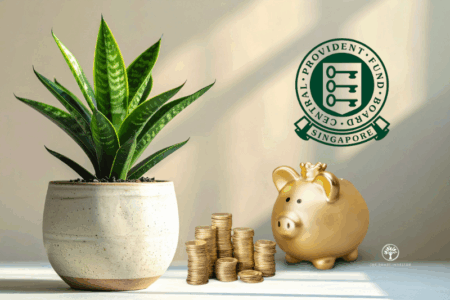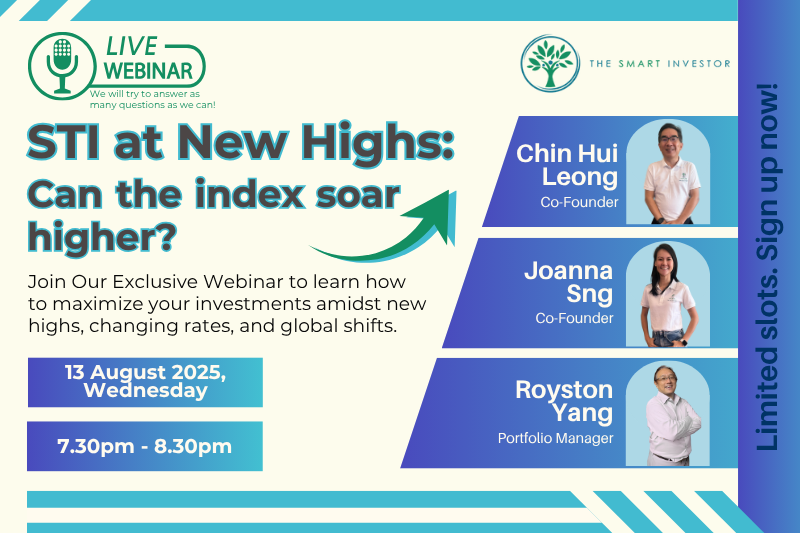The Straits Times Index (SGX: ^STI) reached a new high of 4,011.78 on 2 July 2025, capping a steady 6% gain in the first half of the year. That performance came close to matching the S&P 500’s 6.7% rise. But while the index made headlines, most investors may not have noticed what was driving those returns.
It wasn’t the banks.
According to The Business Times’s article dated 7 July 2025 “Here are the top 10 best performing stocks in Singapore’s STI for the first half”, DBS Group (SGX: D05), OCBC Ltd (SGX: O39) and United Overseas Bank (SGX: U11) ranked only 18th to 20th among STI constituents by total return in the first half.
Instead, companies from a diverse mix of industries—including aerospace, energy, real estate and retail—delivered the strongest share price gains.
Some were long-time dividend favourites that continued to compound steadily. Others had been making strategic shifts that are beginning to pay off. And a few rebounded from a low base after facing challenges in recent years.
Here’s a closer look at the STI stocks that outperformed the banks in the first half of 2025, and what investors can learn from their performance.
Solid businesses, steady returns
Several of this year’s top-performing STI stocks were already known for their stability and yield, and continued to deliver strong results.
ST Engineering (SGX: S63) led the index with a year-to-date gain of more than 70%. The group secured over S$4.4 billion in new contracts in the first quarter, pushing its order book to a record S$29.8 billion. The business continues to show how steady execution, strong cash flow and a focus on long-term growth markets can reward shareholders.
Singtel (SGX: Z74) returned to profitability and announced its first-ever share buyback programme, totalling S$2 billion over three years. With its digital infrastructure pivot gaining traction, and improved earnings visibility, the stock rose more than 25% in the first half.
CapitaLand Integrated Commercial Trust (SGX: C38U) delivered a 16% return despite headwinds facing the REIT sector. Through capital recycling and disciplined asset management, CICT maintained distribution stability, underscoring its role as a defensive core holding.
Riding structural changes
Several STI companies benefited from aligning their businesses with longer-term shifts in regional demand and infrastructure development.
Sembcorp Industries (SGX: U96) rose more than 30% in the first half, driven by continued growth in its renewable energy portfolio. With contract wins in India and a target to derive 70% of gross capacity from green sources by 2030, its strategy is gaining traction.
Keppel Ltd (SGX: BN4) continued its transformation into an infrastructure asset manager. The company formed a partnership with the Asian Infrastructure Investment Bank and expanded its renewable project pipeline. The recent appointment of former DBS CEO Piyush Gupta as deputy chairman added weight to its longer-term strategy.
Singapore Exchange (SGX: S68) gained more than 20% as IPO activity picked up. Listings in tech, real estate and services sectors contributed to improved investor interest.
Rebounding from a weak base
Some stocks that had struggled in previous years made strong comebacks in 2025.
Hongkong Land (SGX: H78) rose nearly 50% after announcing a major property divestment and a share buyback plan. The moves signalled a more disciplined approach to capital allocation, helping lift investor sentiment.
DFI Retail Group (SGX: D01) rebounded over 30% after selling off non-core assets and focusing on streamlining operations. While profitability remains under pressure, analysts have begun to take a more constructive view of its strategic clarity.
UOL Group (SGX: U14) gained 31% on the back of new project launches and successful land tenders. Although earnings were down in the previous half-year, the group’s development pipeline and financial strength supported its performance.
Jardine Matheson (SGX: J36) posted a 26% return despite softer results. Its diversified operations provided some resilience, and the market responded positively to signs of stabilisation across its portfolio.
What about the banks?
The big three banks continued to generate healthy earnings, but their share prices saw limited movement in the first half of the year.
DBS, OCBC and UOB all reported solid net profits, supported by net interest income and diversified business lines. However, higher taxes, cautious credit provisioning and weaker market sentiment kept share price gains modest—ranging from 0.11% for UOB to 4.09% for DBS year to date.
While these banks remain core holdings for many investors due to their dividend payouts and financial stability, they did not drive the STI’s upward movement this time around.
Get Smart: A grounded takeaway for investors
The first half of 2025 is a reminder that market leadership isn’t fixed. While the STI reached new highs, it wasn’t the largest index components that led the way. Instead, gains came from companies executing well, winning new business, or taking steps to improve capital efficiency.
Some stocks, like ST Engineering and CICT, continued to offer a mix of income and stability. Others, including Sembcorp and Keppel, showed how strategic realignment can open up new sources of long-term value. There were also companies like DFI Retail Group and Hongkong Land that rewarded investors willing to stay patient through challenging periods.
For long-term investors, the lesson is clear. Diversification still matters. So does paying attention to business execution, not just size or index weight.
First-time investors: We’ve finally released our Beginner’s Guide. Read it in an afternoon, follow the principles, pick an investing style and buy your first SGX stocks within the next few hours! Click here to download it for free.
Follow us on Facebook, Instagram and Telegram for the latest investing news and analyses!
Disclosure: Joanna Sng owns shares of ST Engineering, DBS, OCBC, UOB, and CICT.






